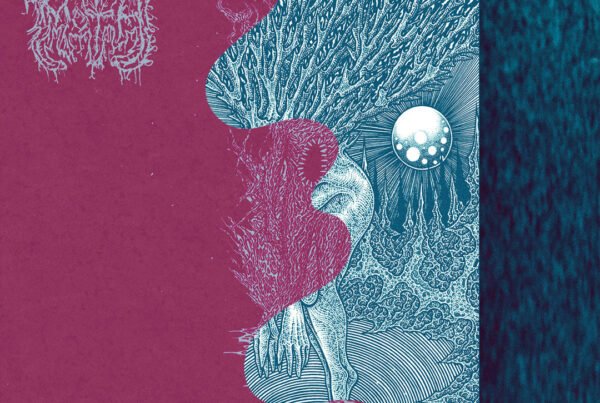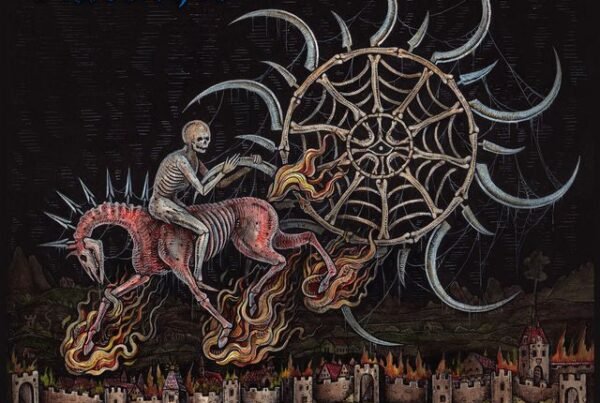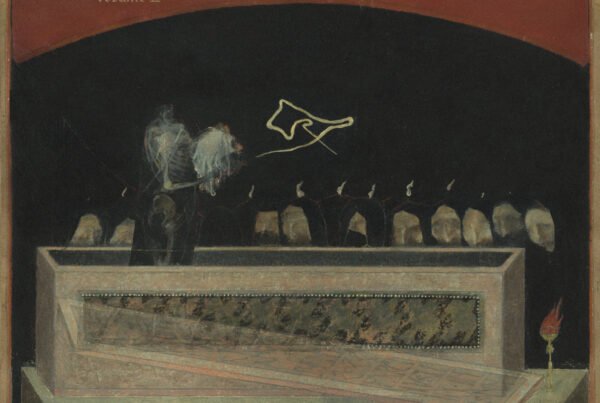At The Gates make an ambitious return to 2021 with The Nightmare of Being, showing their ability to expand beyond their melodic death metal roots and develop into progressive, atmospheric territory, whilst not losing sight of their identity as a band.
Release date: July 2, 2021 | Century Media Records | Facebook | Twitter | YouTube
For many, At The Gates will always be regarded as one of the pinnacle bands to come out of the Gothenburg death metal scene, and for helping pioneer a new approach to the genre with their third studio album Slaughter of the Soul, which has arguably pitted them as one of the godfathers of melodic death metal along with In Flames and Dark Tranquillity. Since then, the Swedish melodeath legends have revitalised their trademark sound with subsequent releases At War with Reality (2014) and To Drink from the Night Itself (2018), both representative of the band’s riff-filled, melodic roots. Yet, whilst their third studio album since reforming in 2011 does cover some familiar melodic death metal elements, The Nightmare of Being sees At The Gates explore new ground putting a great deal of emphasis on atmosphere and progression.
The album opens on an epic note with a short, folk-infused guitar passage, which lingers into a bold and fierce series of power chords and melodic passages that create an immense wall of sound. “Spectre of Extinction” then comes into full force once the intense blast beats and Lindburg’s piercing vocals join the instrumentation; there is a familiar tone being set which sees the band honouring their death metal roots through punishing speeds and dense, layered riffs. The following track “The Paradox” continues this momentum whilst subtly enhancing rich atmospheres, providing some much-welcomed texture to the song. This track looks to then set the tone for the rest of the record, and what prevails is the perfect combination between thick, melodic layering of brutal riffs and dense, foggy sonic ambiences, all of which gives you the strong urge to bang your head.
https://youtu.be/oNKxMkHavAw
The title track is the next on the album, not wasting much time characterising the experience of cosmic horror through dark, ominous, and eerie textures that appear to drop in tempo to give some additional weight to the piece. Moreover, as Larsson and Stålhammar’s guitar work proves, there is no shortage of that textbook melodic soloing and constant change between those intense riffs and sweet harmonies that many would instantly recognise from “Slaughter of the Soul” or “Cold”. “The Garden of Cyrus” further pushes the progressive elements on this album, giving an almost Morningrise-era Opeth kind of feel to it. The jazz-like melodies and saxophone sections mostly drive the rhythmic side of things, whilst the vocals continue to evoke fear and power. This continues for much of the record’s body, as “Touched by the White Hands of Death” shows. The marching drum rhythms and brass sections come into focus near the beginning of this song, setting up some much-anticipated depth and complexity; however, as the music continues, there is still no shortage of intense extremity in the instrumentation, which takes things back towards a more melodic death metal rooted sound that At The Gates are all too experienced at.
“The Fall into Time” comes at the album’s mid-way point; the main riff has a sort of catchy feel to it, which dominates the first two thirds of the song whilst a nice progressive interlude soon follows, bringing some deep, spacey ambiences and a gloomy, threatening presence. The next few tracks have a similar sort of cosmic gloom about them. “Cult of Salvation” continues this atmospheric integration between sweeping guitar hooks, dense drum patterns, and penetrating vocal lines on top of these foreboding, drone-like textures, which gives the listener the impression of walking on the surface of hell. Next, “The Abstract Enthroned” strangely incorporates an almost black metal kind of feel to it, which also has an interesting resemblance to an early Hypocrisy-esque sound. The riffs again dominate this track through complex layering that seems to piece together effectively, and the orchestral accompaniment in sections again provides that extra bit of texture to the song whilst adding a great deal of suspense.
The final two tracks, “Cosmic Pessimism” and “Eternal Winter of Reason”, round off the album in an excellent manner, the former demonstrating some awesome technical virtuosity through the duelling guitar harmonies and a nice rhythmic drive by Björler on bass and Erlandsson’s immense drumming. The song also proves that it’s not too afraid of shaking things up, further highlighting the progressive direction that the band appear to be going in as the clean, melodic guitar patterns ensue, drawing closely on the astronomical feel of the album. The final track again showcases its technical ability by alluding to the vast emptiness of a dense cosmic space through brutal, massive riff structures that increase in tension and are utilised with uncontrollable force.
Whilst At The Gates have proved that they’re still on top of their game over the course of the last decade with their previous releases, which actively show the band’s technicality and melodic prowess, A Nightmare of Being effectively highlights the band becoming more open to a range of different musical directions to be explored in extreme metal. One criticism of this record could even be that these progressive and atmospheric incorporations could be implemented even more, given how well they work with the band’s already established trademark melodic death metal sound. Nevertheless, even when At The Gates appear to be eager to expand on their horizons and explore a range of new sounds, they still maintain the ability to remain close to their ’90s death metal roots and preserve their identity as a band.






